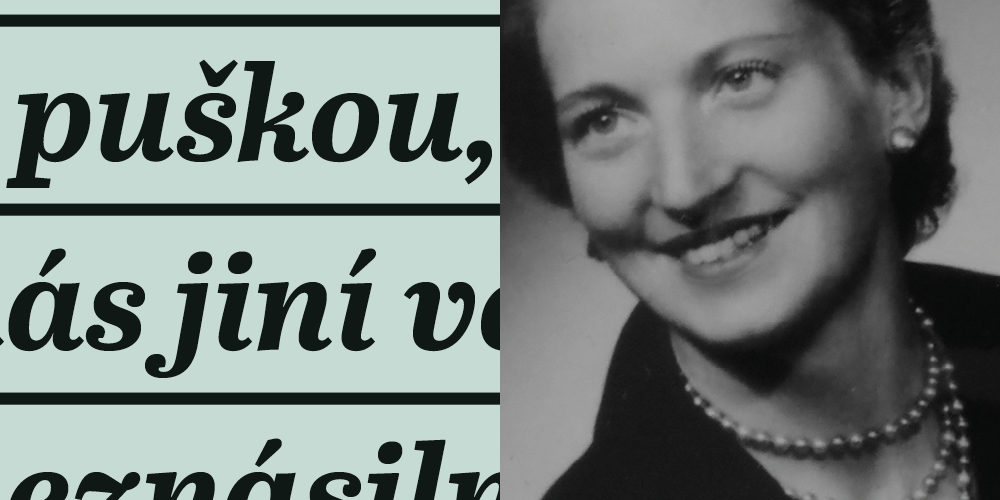Johanna Sieredzká was born into a Sudeten German family in the village of Horní Žleb near Děčín. In 1945, she experienced the liberation of Czechoslovakia by the Soviet Army: “We were all looking forward to the end of the war,” she recalled. “Our mayor, a former teacher and a very good man, went across to meet the Russian tanks. So, we were curious to see what they would do to him. After about half an hour he hobbled back and said:
ʻThese are awfully nice people. They shook my hand from the tank, gave me a drink of vodka, and it was nice. Everybody says how bad the Russians are, how they rape women, and they are so nice!”’
At the head of the column of tanks were Russian officers. It was worse, according to Johanna Sieredzská, when the regular tank troops, soldiers from the Asian republics of the Soviet Union, appeared. They were savage, she said: “We young people used to go swimming in the pond. I remember how, on the orders of an officer, we were always guarded by a Russian with a rifle, so that other soldiers wouldn’t rape us,” she said.
Nevertheless, a tragedy took place at Horní Žleb: “Uschi Winkler, a beautiful and clever girl, lived with us. My mom only had her and she was very worried about her. A Russian soldier saw her and went to her and tried to persuade her to come with him. But she wouldn’t give herself to him. So, he shot her directly in the chest. A Russian officer then shot the soldier on the spot,” Johanna Sieredzká recalled.
Liberation
Nazi Germany was defeated in the Second World War by the determination, bravery, and combat deployment of soldiers from the United States, Great Britain, Poland, France, the Soviet Union, and other countries and nations. But the Soviet Union, led by the dictator Stalin, did not join the Allies until it itself was attacked by the Nazis in June 1941. Until then, the USSR had acted as a partner of Nazi Germany in the spirit of the Molotov-Ribbentrop Pact concluded shortly before the outbreak of the war. At that time, when tens of thousands of Czechoslovaks fled from the Nazis to the USSR, they often ended up in gulag labor camps. The Red Army did not enter the war until the summer of 1941 after Nazi Germany had invaded.
The Soviet Union deployed over six million soldiers to the Eastern Front. We can speak of great heroism and huge losses. The Red Army, with great effort, defeated the better armed and trained German Wehrmacht, and with it the prestige of the “land of the Soviets” logically grew. However, when we talk about the liberation of Czechoslovakia, we must mention, besides the Soviet victims (up to 140,000 Red Army soldiers are said to have died), the tens of thousands of our soldiers fighting alongside the Allies on the Eastern and Western fronts, the brave Slovak insurgents, the paratroopers, partisans and thousands of their helpers, the insurgents from the barricades of Czech towns at the end of the war, and last but not least the soldiers of the American Army who liberated part of the Czechoslovak territory from the west, as well as the forgotten Romanian soldiers advancing with the Soviets from the east. On 8 May 1945, after six long years, peace reigned in Europe and Czechoslovakia became a liberated country. But not free.



